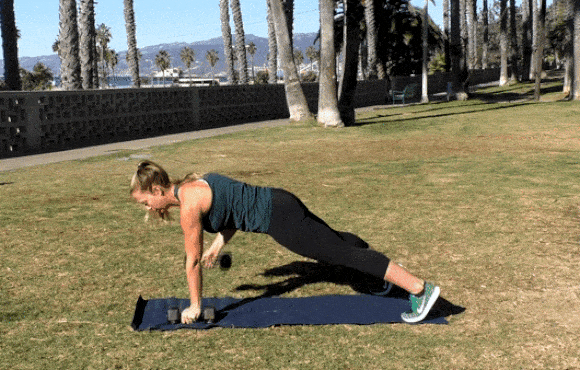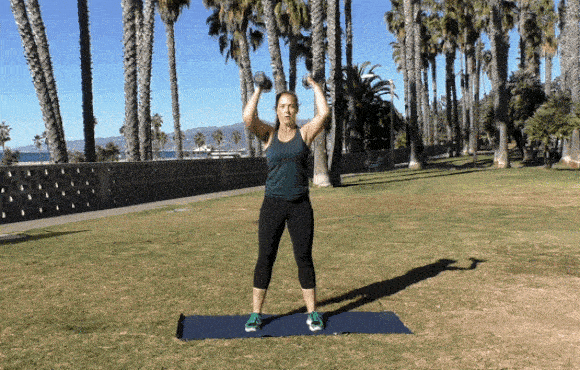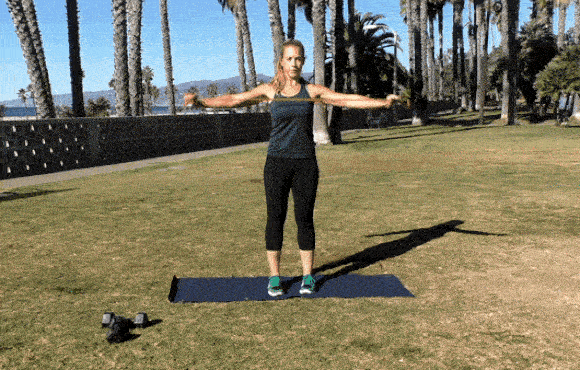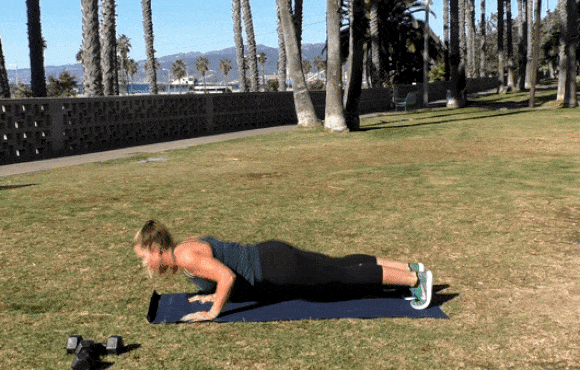As a personal trainer, I know all too well that the clichés are true-runners avoid ignore or just plain hate strength training. While the thought of a root canal might seem more appealing than pumping the ol’ iron, know this: upper body strength for runners is important for not only increasing your running efficiency but also preventing injury. So, let me lay it out for you. You need some strength in those arms. I have four moves that will help you achieve it—and no, you don’t need tickets to the gun show.
Be More Efficient
With every foot strike, we not only use our legs to propel us forward, but we also use our chest, arms, back and torso to balance and improve efficiency. As we run, our arms pump, so the stronger our arms are, the stronger our forward movement.
Before you worry about adding too much muscle and negatively impacting your pace and performance, please understand it takes a lot of time and effort plus a calorie surplus to build muscle. That's not what we're going for here! Increasing strength for runners is going to come from an increase in neuromuscular adaptation (the ability of muscles to work together). By getting your upper body strong, you'll be a more balanced runner--your legs are the main movers, but what's going on above the waist is just as important.
Related: 8 Essential Strength Moves for Beginning Runners
Prevent Injury
Cramping, aches, soreness, inflammation and strains can all occur in the shoulders, arms and necks from running regularly. The main culprit? Poor form. Even the smallest kink in the kinetic chain can rear its ugly head after miles and miles of pounding the pavement. It could be from shrugging your shoulders near your ears, rounding your shoulders, holding a water bottle or cell phone or swinging your arms too widely. Developing and maintaining a strong upper body will allow you to maintain proper posture and position as you fatigue. Translation: You'll be able to run longer without fatiguing and getting that sloppy, hunched overlook that you see near the marathon finish line.
Related: 6 Strength Training Exercises for Marathon Runners
If I've convinced you to finally dip your toe in the strength training waters, here's a short circuit that you can do twice a week to start. It should take you around 10 minutes and can be done after a short run when your arms aren't too fatigued.
Start with two rounds of 10 to 12 reps, depending on your current level of strength, and gradually work your way up to four rounds of 15 to 20 reps. Do all four exercises back to back, and rest one minute between rounds.
Also: 13 Essential Core Moves for Runners
RENEGADE ROW
1 of 5
If you can't quite remain in a rigid plank while performing the row, move to an incline position and use one dumbbell at a time, placing your hand on a table, chair or bench.
How To: Set two dumbbells on the floor about shoulder-width apart, and start at the top of the pushup position with your hands on the weights. Keep your body in a straight line from your shoulders to your ankles, and row one weight up towards the side of your body near your ribs while balancing on your other hand and both feet. Hold at the top for a second and slowly return the weight to the starting position. Repeat on the other side.
Find:
Your Next RacePUSH PRESS
2 of 5
I always like to start runners off with a dumbbell push press because your legs assist with the movement. As you build strength, you can transition this movement to a strict overhead press by squeezing your quads and your butt, thereby eliminating any leg assistance and relying solely on your arms.
How To:
Stand with your feet hip-width apart, holding a pair of dumbbells just outside your shoulders, elbows just in front of your body and with palms facing each other. Dip your torso straight down about 2 inches, and then explosively push up with your legs as you press the weights straight over your shoulders.
Find:
Your Next RaceBANDED PULL APARTS
3 of 5
This is one of my all-time favorite moves to strengthen your upper back and shoulders, along with improving posture.
How To:
Start with your arms extended straight in front of you, holding the band with both hands. Keeping your arms straight, move your hands out laterally to your sides, then reverse the movement.
Find:
Your Next RaceHAND RELEASE PUSH UPS
4 of 5
A lot of times, people don't reap the full benefit of a push-up because they don't hit the full range of motion. Hand release push-ups force you to touch your chest to the ground, lift your hands and press back up to a plank position. These can be done from your knees as well.
How To:
Start at the top of the push-up position and lower yourself down until your whole body makes contact with the ground. Release your hands from the ground, and pull your arms up towards the ceiling. Then, place them back down and perform a push-up.
Find:
Your Next RaceGet ACTIVE on the Go


Couch to 5K®
The best way to get new runners off the couch and across the finish line of their first 5K.
Available for iOS | Android






Discuss This Article